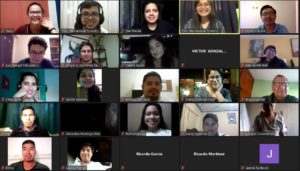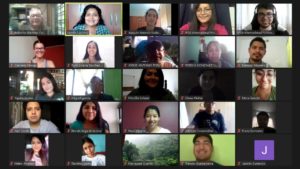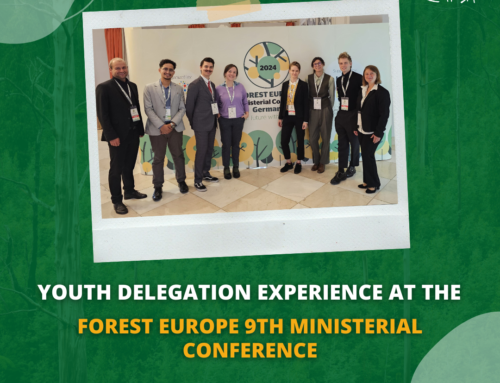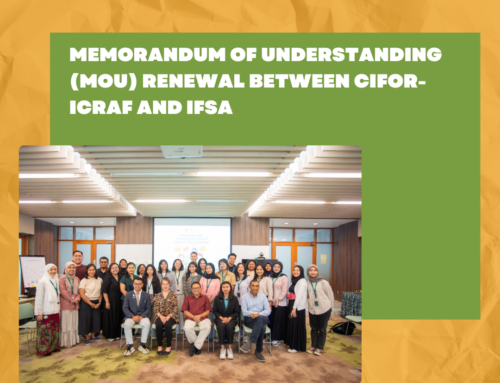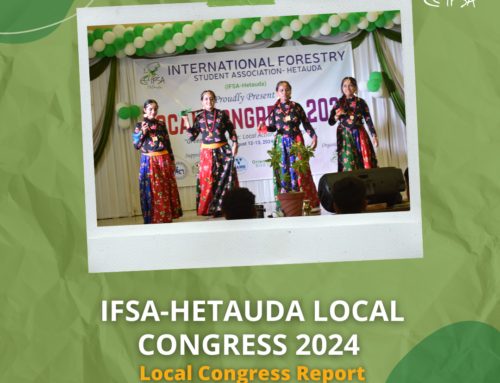Webinar LATAM
Last January 27th and 28th, the Latin America region organized a webinar called “Perspectives of forestry sector for 2021 in Latin America” where each Local Committee invited a professional of the sector to give their point of view.
As Regional Representatives, Jazmín López and Yamile Sánchez, are so grateful for the commitment of the organizing committee, Gabriela Monge, Steve Guzmán, Yajaira Acuña, Joaquín Gutiérrez, Priscilla Solano, Yael Dávila, Diana Fleitas and Luis Rangel, they are enthusiastic members who have always demonstrated responsibility and compromise.
The summaries of each speaker are described below.
MEXICO
With Dr. Hugo Ramírez Maldonado spoke about several aspects, highlighting the way forest education is handled and the importance of its correct adequacy in times of a pandemic and how the organisation of students is the key piece in avoiding educational deterioration. There was talk about the land tenure situation that is different in Mexico compared to the rest of Latin American countries and how it affects the forest sector and its contribution to the internal economy.
COSTA RICA
The M.Sc. Gustavo Torres Córdoba provided the Latin American region with data on the territorial area, approach, problems, challenges and applied policies of the sector for the growth of professionals, citizens, the economy and therefore the country in forest terms. He gave an overview of what the forestry sector has been in our country (Costa Rica) and about the new challenges resulting from the pandemic.
CHILE
Horacio Bown, Phd (University of Chile) made a sui generis presentation that can be fundamentally divided in two parts, the first one centered on non forestry issues, but topics that lead and focus the whereabouts, purposes and goals of the forestry professional. The second part, more focused on the matter, was about the capture of carbon and its implications on the forestry industry.
GUATEMALA
José Rodrigo Rodas Ramos (INAB, Guatemala) talked about how the Forestry sector was affected in 2020 by the Covid-19 situation with production and trade disruptions, reduction in forest resource surveillance, and competition with replacement materials (plastic, metal, concrete), and he talked about what they are expecting for 2021, like recovery of related sectors (for example, construction), increase in projects related to forest landscape restoration, high demand for plants in nurseries, the international climate agenda is resumed, the USA returned to take on Bonn challenge commitments, there will be forestry investment, use of digital technologies and development of virtual platforms to streamline procedures.
PERU
The beginning of Gustavo Suarez’s presentation reminds us how most civilizations during history had used wood to the point of deforesting large areas, and only a few had achieved a true communion with the forest. Suarez then affirms the need to “unlearn” and to begin to understand the benefits which the forest provides beyond wood, to focus more on the services it provides us as an ecosystem, and also to give it a more comprehensive approach, as is well done in agroforestry systems. All this process must go hand in hand with research to begin to assess the importance of the resources that the Amazon offers us, as well as the forest plantations carried out in degraded areas.
Finally, Suarez mentions the challenges to be met by the forestry professionals in the 21st century; among the most important are to understand and to teach the importance of the ecological benefits of the forest and to develop skills as a manager, to wisely relate the different stakeholders in a forest, while having solid knowledge of ecological processes.
PARAGUAY
Ruth Sanchez, Engineer Forestal of the National University of Asunción, mentioned regarding forest policy, the National Forest Institute (dependent on the Presidency of the Republic), ensures the protection of forests. Among the main laws are: Law 422/73 Forestry; Law 6256/18 “Zero Deforestation” (prohibits transformation and conversion activities of areas with forest cover in the Eastern Region); Law 4890: Real right of forest surface; Law 6616: export of exotic woods. Despite these laws, the Occidental or Chaco region suffers high rates of deforestation. That is why both INFONA and the National Development Bank offer incentives for forest production, there are also social projects such as Agroforestry Systems, silvopastoral systems that allow associating agricultural, foretal and livestock crops for the subsistence of peasant families, mainly small to medium producers.
Paraguay’s forestry sector continues to grow, taking the example of neighboring countries and innovating in some cases.
